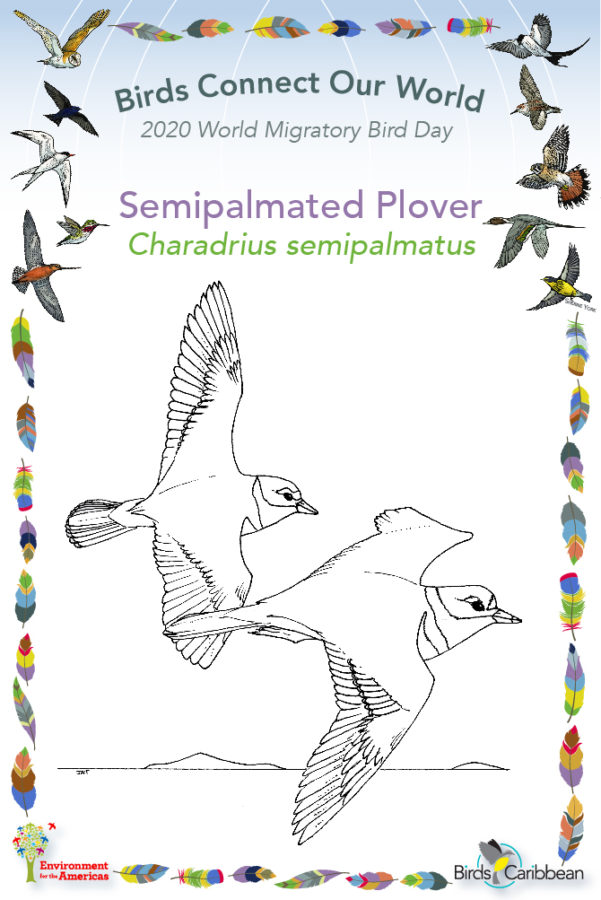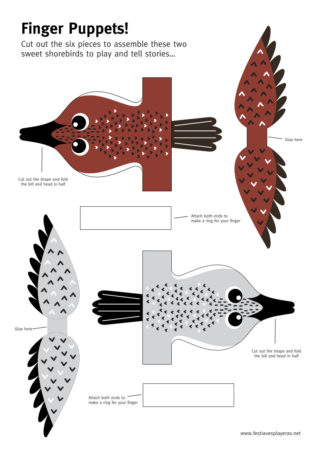Celebrate World Migratory Bird Day (WMBD) with us in our virtual “Birds Connect Our World” edition! Have fun learning about a new migratory bird every day. We have colouring pages, puzzles, activities, and more. Download for free and enjoy nature with your family at home. This week we are also celebrating World Shorebirds Day and Global Shorebird Count (3 to 9 September).
Migratory Bird of the Day: Semipalmated Plover
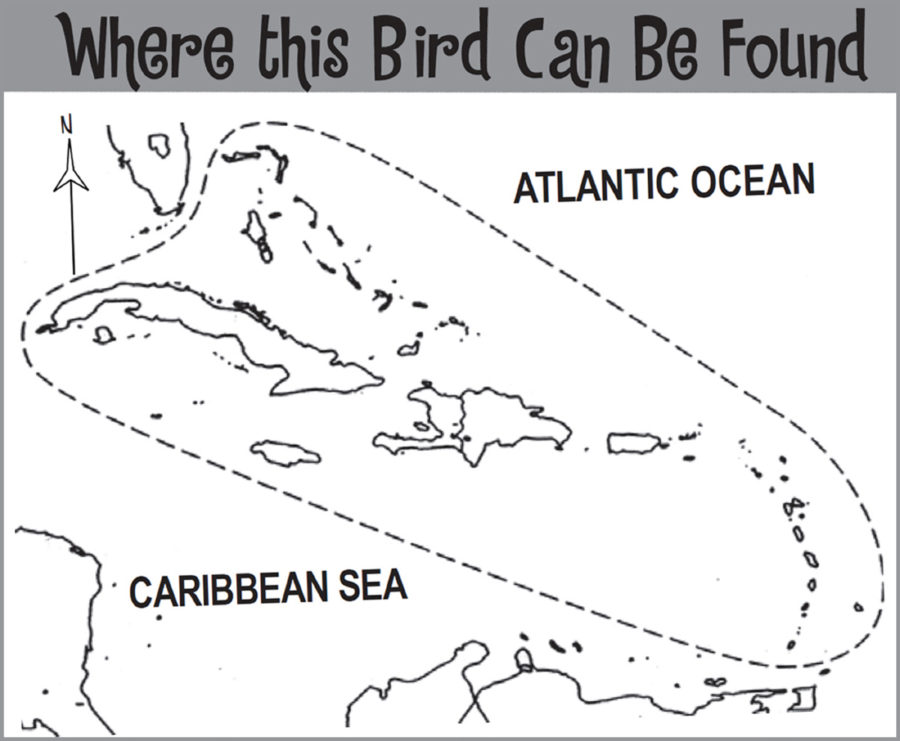
Semipalmated Plovers are small, stocky shorebirds with medium brown upperparts, white underparts, short stubby bills, and a dark band around their neck and breast. Their legs are orange, and so is the base of their beak; although this fades to black by winter. They look very similar to Piping Plovers, but are a warmer brown colour. The name ‘Semipalmated’ comes from the fact they have slightly webbed toes that they can use to swim short distances.
Semipalmated Plovers breed in the arctic and the far north of the US and Canada. They arrive in the Caribbean in the autumn. Some will venture further south, but many of them will spend the winter here, in tidal areas, salt ponds, beaches, and mudflats. They feed on marine worms, crustaceans, and small mollusks.
Scientists in Brazil noticed that Semipalmated Plovers use something called ‘foot-trembling’ to get food. They stand still on one leg, and shake the other leg very fast, with their foot in the mud. This makes any worms of crustaceans move, which means the Plover can spot them more easily and gobble them up.
Semipalmated Plovers like to flock together for safety and you might spot large groups of them feeding together. As well as their own kind, Semipalmated Plovers are also happy to mix with other shorebird species out on the mud or sand. Learn more about this species, including its range, photos, and calls here.
Colour in the Semipalmated Plover!
Download the page from Migratory Birds of the West Indies Colouring Book. Use the photos below as your guide, or you can look up pictures of the bird online or in a bird field guide if you have one. Share your coloured-in page with us by posting it online and tagging us @BirdsCaribbean @WorldShorebirdsDay #WMBD2020Carib #WorldShoreBirdsDay
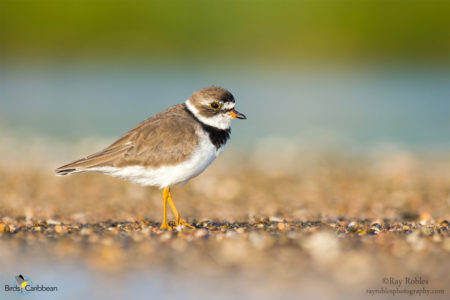
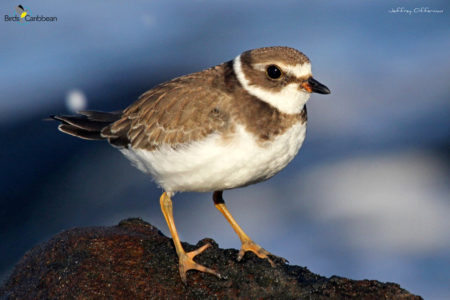
Listen to the call of the Semipalmated Plover
The Semipalmated Plover’s call is a piping two-note “tu-ee.”
Puzzle of the Day
Click on the images below to do the puzzles. You can make the puzzle as easy or as hard as you like – for example, 6, 8, or 12 pieces for young children, all the way up to 1,024 pieces for those that are up for a challenge!


Activity of the Day
For KIDS: Make your own shorebirds! Download the pieces and then cut out and assemble these two cute shorebirds. You can use them to imagine the long journeys shorebirds like these make and the adventures they might have on the way!
FOR KIDS AND ADULTS:
- Visit a pond, wetland or nearby beach and see how many different shorebirds and waterbirds you can find and identify. Use a bird field guide or the FREE Merlin bird ID app to help you identify the birds you are seeing.
- If you’re able, do a count of the species that you see – learn more about counting waterbirds and the Caribbean waterbird Census at this link. Learn more about World Shorebirds Day and the Global Shorebird Count (September 3 to 9, 2020) at this link.
- Enjoy the videos below of Semipalmated Plovers feeding. In the first, filmed in April, the bird is starting to get it’s breeding plumage. This video shows well the ‘run and stop” feeding method of plovers – will see it looking for food items running and then stopping to feed. In the second video (with Spanish commentary) the bird is in it’s winter plumage and can be seen using ‘foot-trembling’ to find food.
- Visit MigratoryBirdDay.org for many more free activities and resources to learn about migratory birds, their threats and conservation actions you can take.

